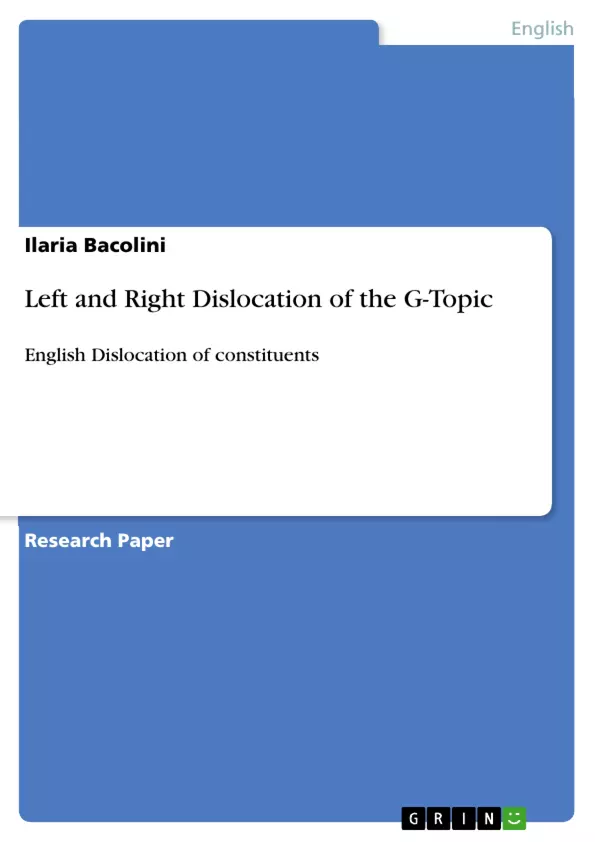In English, the lowest position of the Topic in CP does not appear to be available for left realizations of the G-Topic. The reason for such unavailability remains unexplained. What is known, however, is that there are no recognized cases of the G-Topic dislocated on the left. In spite of this, the present analysis will lead us to maintain that, even in this language, left dislocation of the G-Topic is present, but depends on “particular structural conditions of the CP” and on the uniqueness of such a Topic as the only element in CP that can occupy the functional projection of TopP. This paper is divided into three main sections: in § 2, we will present an introduction to the notion of Topic and to other notions considered important to understand subjects in question. In § 3, we will explain in detail our aforementioned hypothesis; finally, in § 4, we will discuss right dislocations of the G-Topic and, in particular, the so-called ‘accented’ Topic.
Inhaltsverzeichnis (Table of Contents)
- Introduction
- The Topic
- CLLD, LD and TOP
- G-Topic
- Structural conditions of the CP for the realization of the DS G-Topic
- Topic on the right
- RD Topic versus emarginalization
- The data
Zielsetzung und Themenschwerpunkte (Objectives and Key Themes)
This paper explores the linguistic phenomenon of Topic in English, specifically focusing on the Familiar Topic (G-Topic), its left and right dislocations, and the structural conditions that govern its realization. The paper compares English to Italian, a language where G-Topic dislocations are more common.
- The nature and function of the Familiar Topic (G-Topic) in English and Italian
- Structural conditions for G-Topic left dislocation in English
- The distinction between Right Dislocation (RD) and emarginalization
- The "accented" G-Topic and its pragmatic function
- Cross-linguistic variation in Topic realization
Zusammenfassung der Kapitel (Chapter Summaries)
The paper begins by defining the concept of Topic, drawing upon various linguistic theories. It then investigates the different types of Topics, particularly focusing on the Familiar Topic (G-Topic). Chapter 3 explores the specific structural conditions required for G-Topic left dislocation in English, arguing that it is not impossible but subject to specific restrictions. Chapter 4 delves into the analysis of right-dislocated Topics, distinguishing them from emarginalization and analyzing the "accented" G-Topic, which functions as a signal of a shift in information status.
Schlüsselwörter (Keywords)
This study focuses on the linguistic phenomena of Topic, left and right dislocation, the Familiar Topic (G-Topic), emarginalization, prosody, syntax, and cross-linguistic variation in the realization of grammatical structures.
- Citar trabajo
- Ilaria Bacolini (Autor), 2010, Left and Right Dislocation of the G-Topic, Múnich, GRIN Verlag, https://www.grin.com/document/206087



